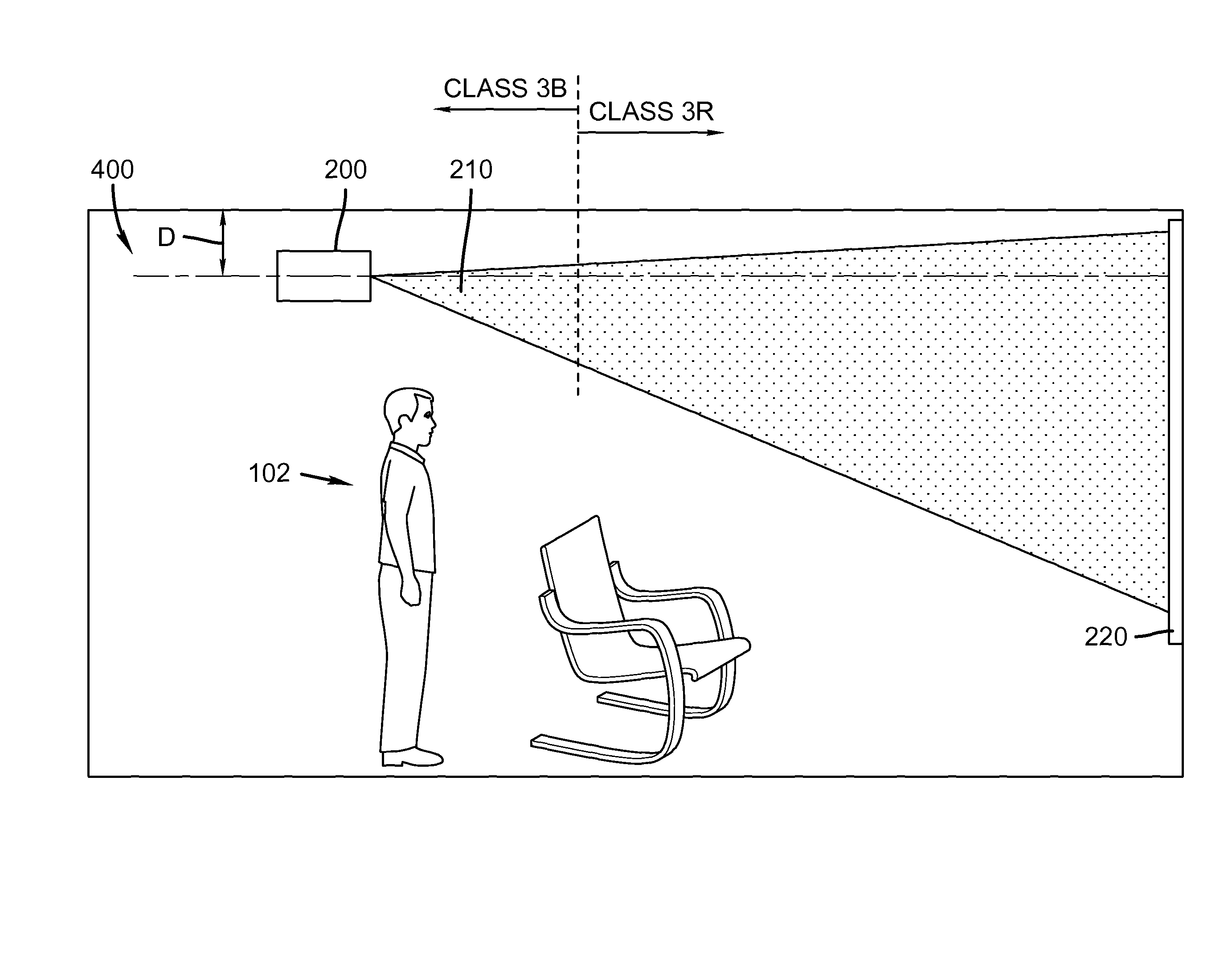Enhanced safety during laser projection
a technology of enhanced safety and laser projection, applied in the field of enhanced eye safety for image projection systems, can solve the problems of preventing wider adoption of existing technologies, lack of compact, low-cost, high-power rgb lasers, etc., and achieve the effect of improving eye safety and improving eye safety
- Summary
- Abstract
- Description
- Claims
- Application Information
AI Technical Summary
Benefits of technology
Problems solved by technology
Method used
Image
Examples
Embodiment Construction
[0039]To provide perspective, a scenario is depicted in FIG. 1 in which a viewer 102 within a local environment 400 is observing an image that is projected on a screen 220 by a projector 200 that emits a light beam 210. An intruding object may intercede between the projector 200 and screen 220, such that all or a portion of the light beam 210 falls on the object, and all or a portion of the light beam 210 is then prevented from reaching the screen 220. In the scenario of FIG. 1, projector 200 is a ceiling mounted long throw projector, in which the projector 200 is located a significant distance (for example >8 feet) from the screen 220. The optical axis of the projector is a distance “D” from the ceiling. The projection lens (not shown) can be used in an off axis situation to bias projection downwards relative to the optical axis. Various areas within the light beam 210 can be at energy levels consistent with various laser eye-safety exposure levels, such as depicted in FIG. 1, in w...
PUM
 Login to View More
Login to View More Abstract
Description
Claims
Application Information
 Login to View More
Login to View More - R&D
- Intellectual Property
- Life Sciences
- Materials
- Tech Scout
- Unparalleled Data Quality
- Higher Quality Content
- 60% Fewer Hallucinations
Browse by: Latest US Patents, China's latest patents, Technical Efficacy Thesaurus, Application Domain, Technology Topic, Popular Technical Reports.
© 2025 PatSnap. All rights reserved.Legal|Privacy policy|Modern Slavery Act Transparency Statement|Sitemap|About US| Contact US: help@patsnap.com



